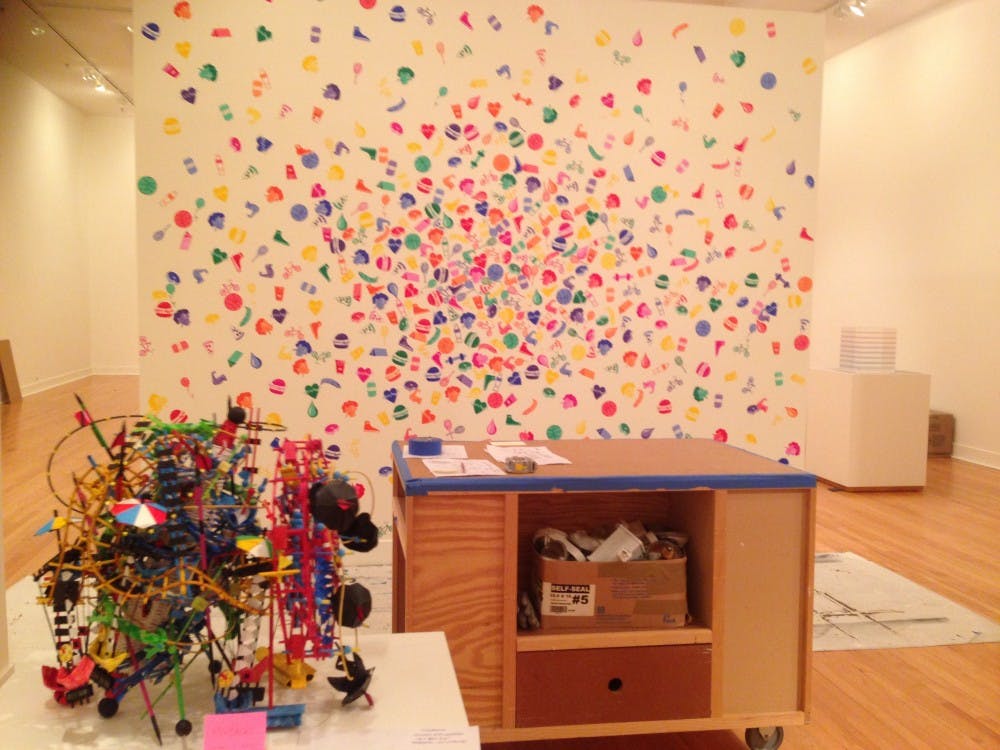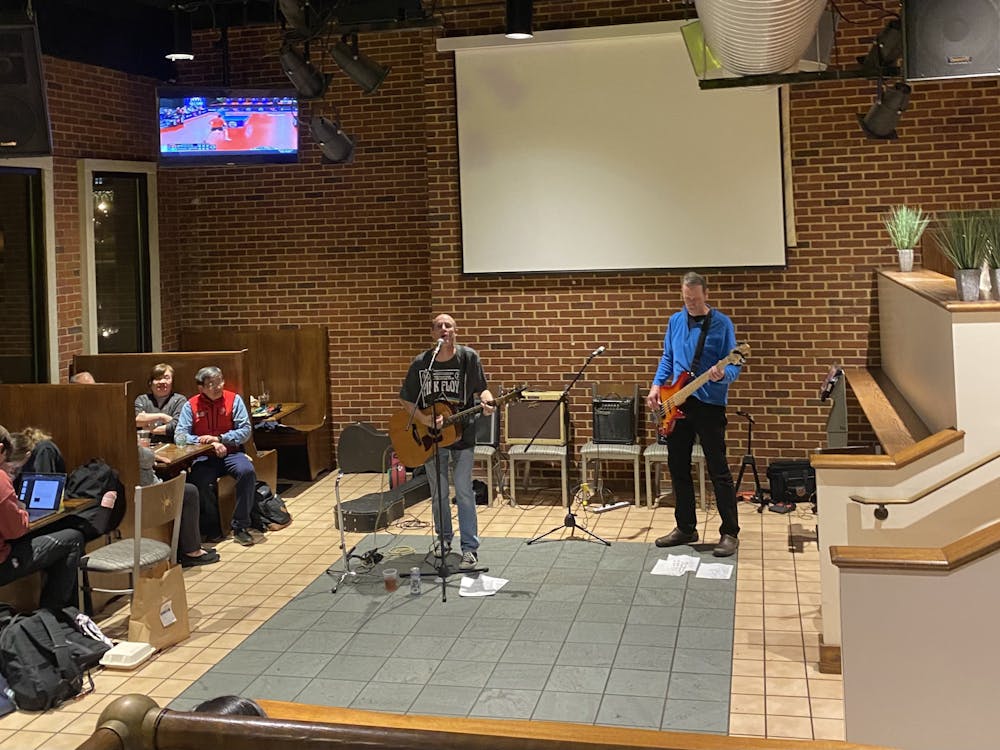Tucked away in Boatwright Library sits a quietly overlooked museum: the Lora Robins Gallery of Design from Nature. Inside is a collection of approximately 50 turtle fossils spanning millions of years.
The exhibition, "Turtles in Time: From Fossils to the Present," features turtle fossils from around the world, including some rare early fossils, Matthew Houle, the curator of the exhibition, said.
The exhibition, which opened with a reception Feb. 1, shows a large span of turtle evolutionary progression, Houle said, with the oldest fossil in the collection being 150 million years old. The fossils stretch back to earlier species and culminate with the presentation of a live turtle taken out of Westhampton Lake by the biology department.
The fascinating thing about turtle evolution is its consistency, he said.
“That’s kind of what this show is, to sort of bring people back in all these time slices and these different places — in a very small way — and show this tremendous continuity of this one kind of animal that has survived a tremendously long amount of time and has endured and still today is enduring,” Houle said.
The show could also raise awareness for conservation, with as many as half of all turtles threatened or endangered, he said.
Houle got the idea for the exhibition last March at a Richmond Gem and Mineral Society meeting, where he met David Hutchison, a retired research chemist and fossil collector. Hutchison told Houle about the turtle fossils he and his wife, Jean Hutchison, collect, which come from all over the world.
After that discussion, Houle came up with the idea of featuring them at the university museums.
The process of creating the exhibition was not unusual, Houle said, though he had an especially short schedule in which to complete his work.
Enjoy what you're reading?
Signup for our newsletter
Most exhibitions, whether in the Lora Robins Gallery or the Joel and Lila Harnett Museum of Art, take at least threes years to prepare, Elizabeth Schlatter, the deputy director and curator of exhibitions at the university museums, said. Houle had only 10 months to prepare this exhibition.
“I wish I had another six months to really polish it as much as I’d like,” Houle said. “Doing any exhibition takes a lot longer than a lot of people would think.”
Those ten months were filled with research — aided by the Hutchisons — writing descriptions, consulting the biology department, and then actually installing the fossils in the museum.
One of the challenges with the exhibition was to have visitors be able to visualize the fossils as live turtles, especially as many of the fossils do not retain the inner body of the turtle, Houle said.
He consulted a paleo artist to draw ten illustrations to depict what some of the turtle fossils would look like alive, found pictures of current-day locations resembling the habitats of certain turtles and had maps created of other locations.
“It’s all centered around a celebration for all the kinds of turtles,” Houle said.
On the opposite side of campus, another exhibition was unveiled in the Joel and Lila Harnett Museum of Art. A contemporary art exhibition, "Crooked Data: (Mis)Information in Contemporary Art," features everything from colorful T-shirts to sculptures to apps, and opened within a week of "Turtles in Time."
The idea behind the exhibition is to display artwork that uses data in atypical ways, with artists allowing data to make aesthetic decisions for them or collecting data most people wouldn’t, Schlatter said.
The exhibition is using a variety of artists from around the country, an international artist from London, but also local works, Schlatter said, which is rare given that many exhibitions don’t allow for such a variety.
Brooke Inman, a Richmond professor, and students from her fall 2016 Introduction to Printmaking class are also having their art featured in the show. The professor’s solo piece is one about stray cats in her neighborhood, she said, which she then photographed. She hoped the piece would have an obsessive quality to it, as if she were a crime-scene detective.
The piece she did with her students was based on participation data from the Weinstein Recreation Center. The class assigned each day of the week a particular color and each hour a different symbol, which was then screen-printed, she said.
The students installed the work in the Harnett Museum of Art in their free time this semester, Inman said.

Other works include a piece by American artist Ward Shelley detailing the history of cars and an exhibition of British art group Blast Theory’s fake life-coaching app, which gets more invasive over time. A video displaying a visual representation of Facebook posting trends also will be displayed, Schlatter said.
Schlatter began preparing for the exhibition about three years ago, finding and contacting artists whose work was in line with the theme she had conceived. Then, she had to conduct interviews over email with artists to better discuss their pieces, she said.
“What I like about this show is it’s extremely accessible in the sense that almost everyone knows what data is,” Schlatter said. “And I think many of us are familiar with how important data is to our lives, to what’s going on in politics, what’s going on in culture and science.”
The university museums try to change exhibitions at least once a semester, if not twice, curator of museum programs Heather Campbell said.
“The message we would like to send is that we are open every day and we’re free,” she said.
Contact reporter Kay Dervishi at kay.dervishi@richmond.edu
Support independent student media
You can make a tax-deductible donation by clicking the button below, which takes you to our secure PayPal account. The page is set up to receive contributions in whatever amount you designate. We look forward to using the money we raise to further our mission of providing honest and accurate information to students, faculty, staff, alumni and others in the general public.
Donate Now



